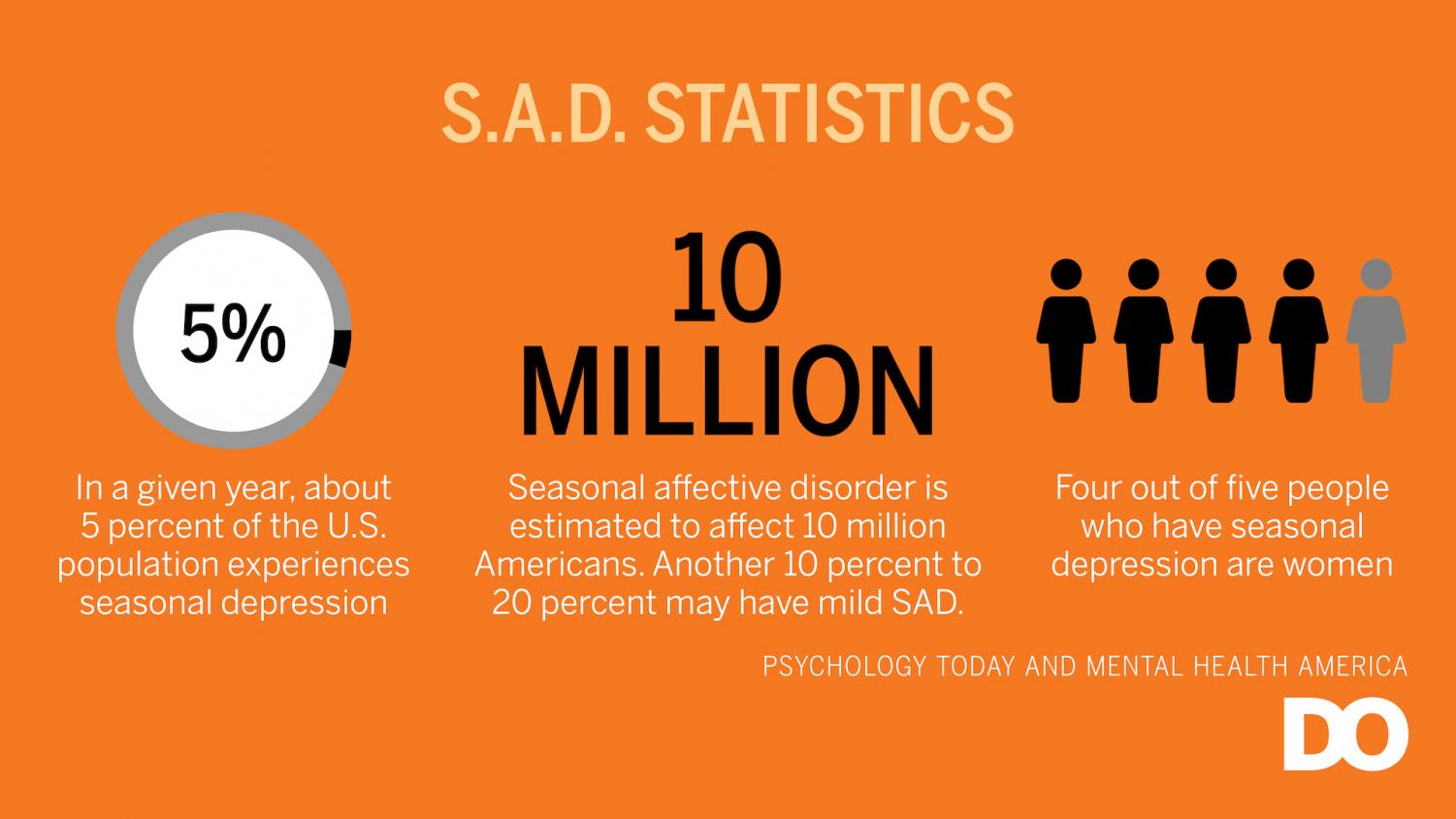Out of Season
Seasonal Affective Disorder can sabotage a time of year that is intended to spread joy.
With the arrival of winter comes the risk that we are one of the roughly 10 millions Americans who struggle with Seasonal Affective Disorder.
November 24, 2020
The arrival of the holiday season and all its attendant joy can mask a serious problem that affects over ten million Americans. As trees grow bare and skies turn to slate, Seasonal Affective Disorder (SAD) can undermine a time of year that is intended to lift spirits.
SAD is a form of depression that occurs most commonly during the fall and winter months. As the name suggests, it is strongly correlated to the change of seasons. SAD usually begins and ends around the same time every year, though in some cases it can continue during the spring and summer.
During the fall and winter, the decrease in the amount of sunlight can result in disruptions to the body’s internal clock, throwing off daily routines and leading to feelings of depression. The lack of sunlight can also lead to a drop in serotonin, a brain chemical that affects mood, which can trigger depression. The change of seasons can also tamper with the body’s sleep patterns by disrupting melatonin levels.
Nearly five percent of adults in the US report struggling with Seasonal Affective Disorder, which can last nearly 40 percent of the year. The onset of SAD usually occurs between the ages of 18-30. and is four times as likely to target women. Many symptoms of SAD can affect the quality of life among individuals, and six percent of SAD cases require hospitalization.
Though the term “winter blues” is used causally in conversation, Seasonal Affective Disorder is much more than a passing state of mind. The symptoms and effects that SAD has on the human body should not be taken lightly. In some extreme cases, SAD has been linked suicidal ideations.
The onset of SAD can be highly distressing and make it overwhelming to complete seemingly simple daily tasks such as school work or chores around the house. Whether easily detected or not, SAD symptoms can include changes in sleep patterns and appetite, depressive thoughts, loss of interest in activities where enjoyment was previously found, and feelings of worthlessness and guilt. Family history can also be a key sign for the development of SAD — many people with SAD are reported to have a close family member with SAD or another form of depression.

Yet SAD is not an untreatable ailment. Generally speaking, symptoms can improve with the change of seasons, but seeking help earlier can be more effective. SAD can be treated through light therapy, antidepressants, and talk therapy or counseling.
Light therapy involves the exposure to a box that emits a bright beam while filtering out harmful UV rays, mimicking the natural outdoor light that the human body lacks during the fall and winter months. A light therapy session can last between 30 to 60 minutes per day during the darker months. Stopping light therapy too soon can re-trigger SAD symptoms, so the continuation of therapy sessions is typically advised until the onset of spring.
Talking to a therapist or counselor can also improve symptoms of Seasonal Affective Disorder. Likewise, taking care of your overall health, physically and emotionally, can have a positive impact on the effects of SAD. Physical exercise, a healthy diet, plentiful sleep each night, and connections with friends and family can help as well.
Soon it will be time to string the lights, decorate the trees, and share gifts and quality time with friends and family. With all of the struggles that have arisen due to COVID-19 this year, the arrival of the holiday season feels needed.
But it’s important to remain aware of our mental health. Feelings that can be linked to SAD or any form of depression should not be ignored and can be treated. No matter the circumstances, we all deserve to enjoy the holiday season the best we can.
If you or a loved one may be struggling with SAD, text HELLO to the Crisis Text Line at 741741.












